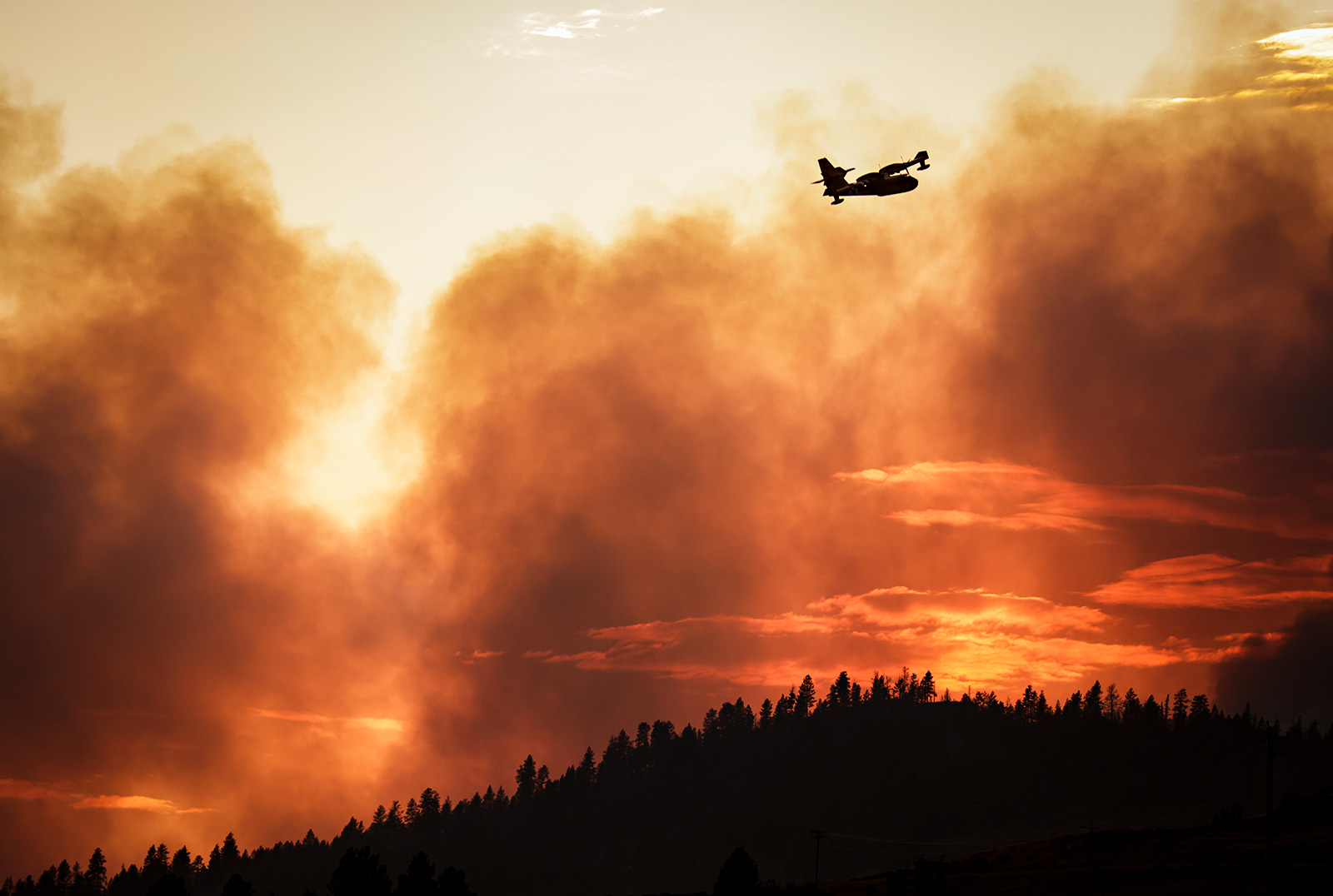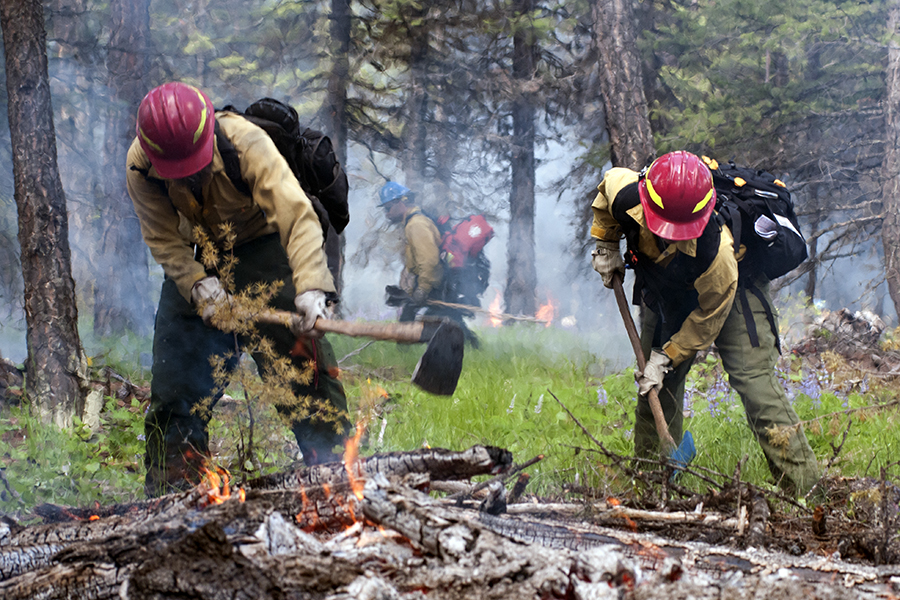As Worrisome Wildland Fire Season Approaches, Flathead Officials Urge Residents to Take Precautions
In the Flathead Valley, the fifth-driest year in 129 years has produced ominous wildfire projections in the region, but officials say ‘firewise’ homeowners can help reduce risk
By Tristan Scott
As Flathead County passes the midpoint of its fifth-driest year since 1894, top fire managers are bracing for a worrisome wildland fire season. Despite those ominous projections, officials say “firewise” residents and fire-adapted communities can provide the best line of defense by taking common-sense precautions to prepare.
With roughly 63,000 Flathead County residents living in the wildland-urban interface (WUI), or about 65% of the population — including 7,745 new residents who have migrated to the WUI in the past two years, according to U.S. Census Bureau data — top fire officials say education, outreach and proactive property owners could spell the difference between a calm or catastrophic summer.
“It’s just something that people need to understand and realize,” Fire Service Area Manager Lincoln Chute said Friday. “We live in a fire environment, so we all have a responsibility to mitigate the risk. And most of what we’re asking from folks is just commonsense behavior and maintenance.”
Montana’s fire season typically arrives in earnest in late summer, but this year Flathead County has recorded 6.2 inches below its normal rainfall while 94.7% of residents are already affected by drought conditions, according to the Montana Drought Forecast. Meanwhile, Chute said emergency services personnel have already been busier than normal, responding to 40 fires in Flathead County in the week leading up to the Fourth of July.
“Those were primarily grass fires caused by fireworks, but that’s still pretty substantial, and we’re really early in our fire season,” Chute said, adding that Glacier National Park has already responded to four lightning-caused fires. “We are drying out really rapidly this year and we’ve had more wind than usual, which just sort of acts like a convection oven and accelerates the drying of the fuels. I’d say the conditions we’re seeing right now are similar to the conditions we had at the end of last year’s wildland fire season. So now is the time to prepare.”
If a large fire does strike the region, it’s likely to not be the only one in the West or even in the state, so firefighting resources will be at a premium. That’s not an unusual phenomenon, because Montana’s fire season is among the latest in the country, but Chute said it still underscores the importance of preventing human-caused fires so that firefighters can keep up with nature-caused burns.
To try and keep the region from tapping into those resources, Chute is asking residents to take precautions and be prepared, something his office — the Flathead County Office of Emergency Services — detailed in an updated Community Wildfire Protection Plan (CWPP) in 2021. The comprehensive 107-page plan, updated from 2011, was adopted by the Flathead County Commission and shared with dozens of state, county, city and business partners.

In it, the authors describe the document as a tool for local landowners to follow to decrease the likelihood of starting a wildfire, contributing to its spread and, most importantly, keeping the community safe. The 2021 update breaks down mitigation strategies by geographic area — dividing sprawling Flathead County into six zones — in an effort to recognize the disparate challenges faced by landowners, for example, in the North Fork and those on the valley floor.
The full document goes in depth on what landowners can do to protect their property but Chute said some of the simplest measures can be the most effective, like cutting down tall grass beginning in the spring, maintaining a fire-safe Home Ignition Zone around your dwelling, clearly displaying your address so first responders can find your property quickly and easily, and creating a plan for what to take and how to leave if and when an evacuation is ordered.
Residents who don’t own land or who may reside in more urban areas where fires are less likely can still do their part to keep the community safe, Chute added, by dousing campfires with water and making sure they are cool to the touch before leaving a campsite, making sure chains on trailers or other vehicles aren’t dragging and sparking on the roadway, and by carefully extinguishing any smoking materials.
Also at the state and local level, the Montana Department of Natural Resources and Conservation (DNRC) has partnered with the University of Montana, Michigan Technological University and Firesafe Flathead to engage local citizens, with an emphasis on residents who are new to the area.
“Recent population changes in Flathead County have the potential to increase peoples’ vulnerability to wildfire,” according to Ali Ulwelling of the DNRC, who encouraged locals to attend an upcoming community meeting on population change and vulnerability to wildfire on July 13 at the Flathead Valley Community College. The meeting will run from 8:30 a.m. to 10:30 a.m. and will be held in room 139 of the Arts and Technology Building at 745 Grandview Dr., Kalispell.
More information on fire prevention can be found at firesafeflathead.com. To track wildfire activity nationwide, visit inciweb.nwcg.gov. The Flathead County CWPP is available at flathead.mt.gov/fireservice/documents/FlatheadCWPP2021.pdf